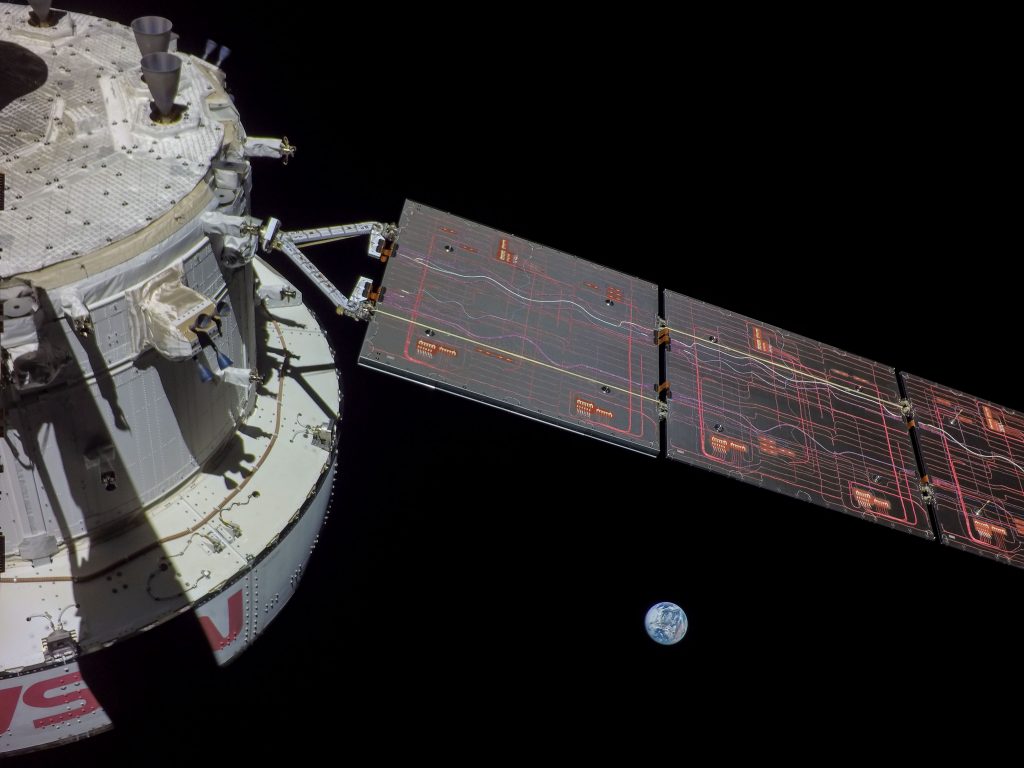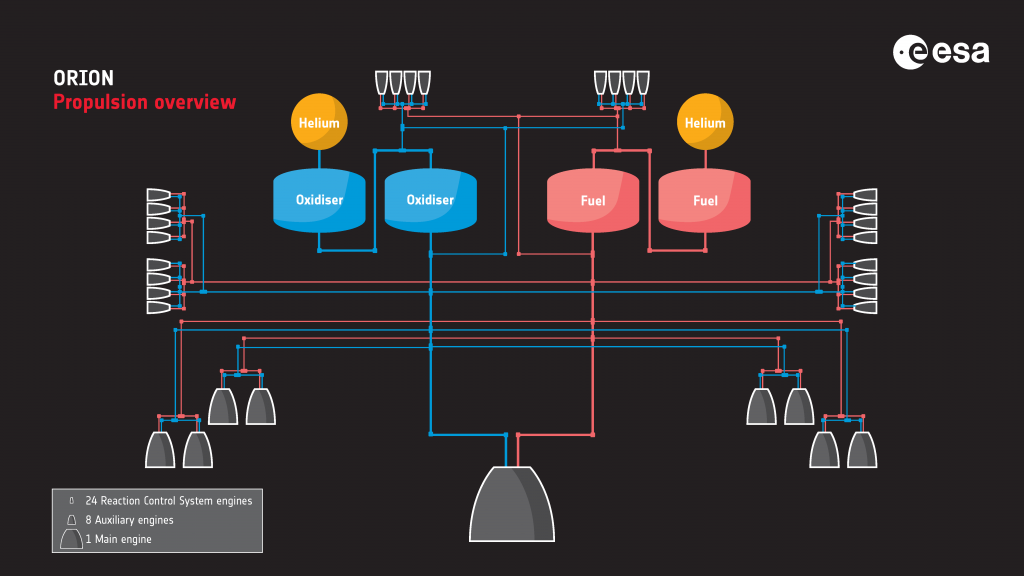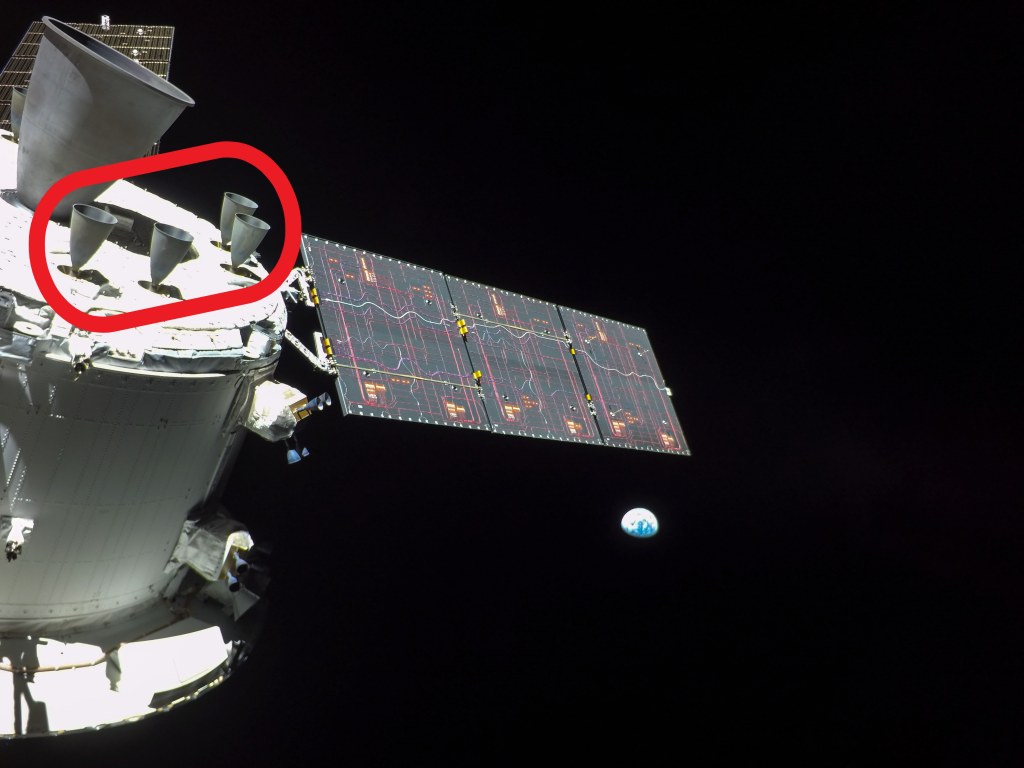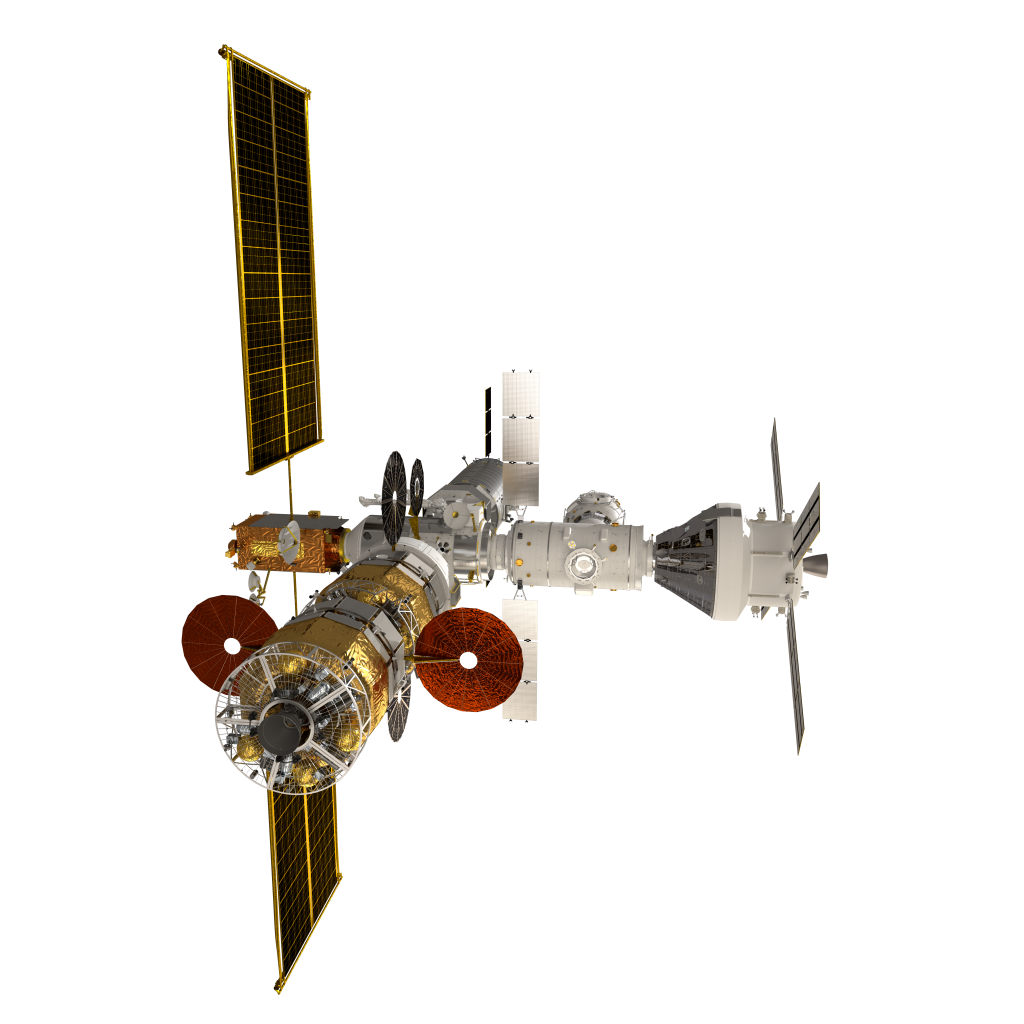The Artemis I mission management team met on 30 November to review the overall status of the spacecraft and agreed all was “go” for Orion to leave its current distant retrograde orbit around the Moon by firing its thrusters as planned at 22:53 CET (21:53 GMT) on 1 December and begin its return toward Earth.
ESA’s European Service Module programme manager Philippe Deloo said, “The spacecraft is exceeding expectations and delivering 15% more power while consuming less than expected, this is a great margin to have. The European Service Module is more thermally stable than expected, so we are consuming less electrical power to heat or cool the spacecraft.

“Propulsion has worked beautifully, there has been no problems whatsoever.”

Mike Sarafin, NASA’s Artemis mission manager said, “We are continuing to collect flight test data and buy down risk for crewed flight,” said . “We continue to learn how the system is performing, where our margins are, and how to operate and work with the vehicle as an integrated team.”
Last orbit burn
Orion also performed a planned orbit maintenance burn to maintain the spacecraft’s heading while slowing it down to prepare for the 1 December departure from the distant lunar orbit. Orion used six of its eight auxiliary thrusters on the European Service Module and fired them for 94 seconds to further test and understand the auxiliary thrusters and in particular the heat that is received by the solar array wings that will help develop Orion’s operational constraints. The European Service Module solar array wings can pivot towards and away from the spacecraft for structural stability or to avoid thruster exhaust, including the heat expelled on a long thruster firing. All previous auxiliary thruster burns were 17 seconds or less.

Orion’s European-built service module has provided the propulsive capabilities to adjust the spacecraft’s course in space via its 33 engines of various types, and serves as Orion’s powerhouse, supplying it with electricity, thermal control, and air and water for future crews, in addition to propulsion. Artemis I is the first time NASA is using a European-built system as a critical element to power an American spacecraft. Provided by ESA and its partner Airbus, the service module extends NASA’s international cooperation from the International Space Station into deep space exploration.
The international collaboration continues with partners to explore the Moon under the Artemis programme. The Gateway is in development to orbit the Moon that will support lunar exploration, includes contributions from NASA, ESA, the Canadian Space Agency and the Japan Aerospace Exploration Agency.

Extra objectives
Four additional test objectives were added to Orion’s return trip to Earth. Two tests will evaluate whether opening and closing a valve on the pressure control assembly affects leak rate. By closing and opening certain valves the operations teams will better characterise the tightness of the valves in space to further fine tune settings.
A third test will demonstrate Orion’s ability to perform attitude manoeuvres for the proximity demonstration on Artemis II that will see Orion detach from the second stage, turn around, fly closely to the second stage and then continue the mission.
The fourth will test Orion’s capability to fly in a three-degree of freedom attitude control mode, as opposed to the six degree of freedom mode it typically flies in. Flying in six degree of freedom mode entails that whenever Orion changes its angle of roll, pitch and yaw, the net result does not change its course through space, only the angle of flight of the spacecraft. In this mode the reaction control system thrusters compensate for any drift that might occur from changing attitude by pushing back and keeping Orion on a steady heading. Mission control will soon test flying in just three dimensions – so only controlling the roll, pitch and yaw – which will use less fuel and requires less complex calculations. The disadvantage of three dimension of freedom mode is that Orion will inevitably start to drift off its original course, and this will need to be corrected in a futre burn.
Before the last orbital maintenance burn, a total of 2576 kg of propellant had been used, 92 kg less than calculated before launch. This leaves 908 kg available in addition to what is planned to use during the mission, almost 43 kg over expected values.
Next steps
Just after 23:00 CET (22:00 GMT) on 30 November, Orion was traveling 407291 km from Earth and 81917 km from the Moon, cruising at 3302 km/h.
The distant retrograde orbit departure burn set for 22:53 CET (21:53 GMT) on 1 December will be covered live on NASA television from 22:30 CET (21:30 GMT).


 Automated Transfer Vehicle page
Automated Transfer Vehicle page ATV blog archive
ATV blog archive
Discussion: 3 comments
Could you please inform the time of burn as usual.
and Please clarify this:
on day-13 you mentioned that the used propellant is 2558 kg.
day-14 : no burns
day-15: you mentioned that 2576 kg of propellant was used prior of this day..
there are 18 kg difference..
We add the times when we get them to the mission overview page in the table at the bottom: https://blogs.esa.int/orion/2022/11/15/artemis-i-short-mission-overview/ , hopefully we will be able to add all at the end of the mission.
The discrepancy noted (well done!) is due to the reaction control system thrusters keeping attitude control. Even though this doesn’t count as a burn the system uses fuel on a daily basis to keep Orion pointing in the right direction, during Artemis I the flight controllers are running lots of tests too and so consumption can be higher than on a “normal” mission day.
Understood..
Thanks a lot. this blog is a great source of data..
you are doing a great job … thanks